 The 20th century was a hundred years of significant changes in what we eat. In 1900 food was … well… food, and real. No food pretended to be something it is not, such as chemicals pretending to be sugar. There were few artificial foods or “food products.” Technofood. Food was food and had been so for thousands of years. One should also add that the price of food rarely changed either.
The 20th century was a hundred years of significant changes in what we eat. In 1900 food was … well… food, and real. No food pretended to be something it is not, such as chemicals pretending to be sugar. There were few artificial foods or “food products.” Technofood. Food was food and had been so for thousands of years. One should also add that the price of food rarely changed either.
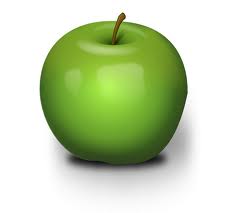 Today food is “nutrition” and much of the “food“ we eat is not real…. well, it exists, so it is real. But it’s not real food. Surprisingly most of the non-real food does not call itself food. It’s called “nutrition.” Hence, the first rule of Green Deane’s thumb: If the packaging tells you it is healthy it probably is not. An apple does not need to prove itself. An edible weed does not have to prove itself either. A package of white flour, sugar and additives pretending to be a wholesome breakfast does have to prove itself.
Today food is “nutrition” and much of the “food“ we eat is not real…. well, it exists, so it is real. But it’s not real food. Surprisingly most of the non-real food does not call itself food. It’s called “nutrition.” Hence, the first rule of Green Deane’s thumb: If the packaging tells you it is healthy it probably is not. An apple does not need to prove itself. An edible weed does not have to prove itself either. A package of white flour, sugar and additives pretending to be a wholesome breakfast does have to prove itself.
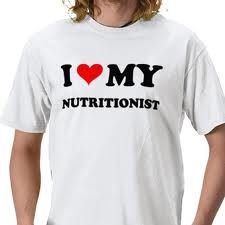 I am often asked what’s the nutrition of a particular wild edible. In fact today I was asked the nutritional value of a particular bug. A bug! Not even a big big. A little bug. The mindset is clearly well-established. It’s a curious question, this “what is the nutritional content of X?” It is not a question your grandmother or great grandmother would have asked, or any of her ancestors. Food was food. “Nutrition” did not exist. There were no nutritionists or dietitians. People were eating what people had been eating for most of human history. That humanity thrived proved that what they were eating worked. Our very existence is prima facie evidence of that. “Nutritionism” had not taken over the food chain. I am not a fan of the past but I think how we ate yesterday is better than we eat today.
I am often asked what’s the nutrition of a particular wild edible. In fact today I was asked the nutritional value of a particular bug. A bug! Not even a big big. A little bug. The mindset is clearly well-established. It’s a curious question, this “what is the nutritional content of X?” It is not a question your grandmother or great grandmother would have asked, or any of her ancestors. Food was food. “Nutrition” did not exist. There were no nutritionists or dietitians. People were eating what people had been eating for most of human history. That humanity thrived proved that what they were eating worked. Our very existence is prima facie evidence of that. “Nutritionism” had not taken over the food chain. I am not a fan of the past but I think how we ate yesterday is better than we eat today.
To be accurate, nutrition wasn’t a significant idea for the first half of the 20th century. And while there were “dietitians” nutrition did not arise as the main player until the 1980s. That’s when the government, for purely political reasons, started holding hearings on food. Things tend to go down hill when government gets involved, and it was so with food. Politicians “discovered” poverty and hunger in the United States in the early 1960s. The food stamp program was started in 1964 when Democrats held the White House. A few years later under Republican Richard Nixon, the Secretary of Agriculture, the infamous joke-telling Earl Butz, ended a program that paid farmers NOT to grow corn. Like popcorn that commodity exploded. Some argue it brought down the cost of food. Then in the early 70s Democrat George McGovern, who had presidential aspirations and who had helped discover poverty and hunger in America, started holding congressional hearings of food. There were huge conflicts of interest. Experts were cherry picked while others were threatened with their jobs if they opposed the various committee findings.
 The short version of the very protracted event was that the government began to suggest one food over the other, such as chicken over beef. You can imagine the grilling that followed. Lobbies threatened to remove from office any politician who singled out any one food, rightfully or wrongly. McGovern, from a beef-producing state, was vilified and was told to find a way out of the ugly mess his hearings had created (as prediced by the experts who were not cherry picked.) As a result politicians abandoned food recommendations and found legal refuge in “nutrition.” The new position became don’t shun meat but do avoid the bugaboo in meat, saturated fat (based upon the fraudulent research of Ancel Keys, thus compounding the mistake.) So for more than 30 years, nutrition has been the operand factor and one reason why the government’s food pyramid is exactly inverted. It is not based so much on healthy eating as lobbying success, read threats to reelection. This, I think, is behind our health crisis — more cancer, more heart disease — and the obesity epidemic. With the history noted let’s fast forward.
The short version of the very protracted event was that the government began to suggest one food over the other, such as chicken over beef. You can imagine the grilling that followed. Lobbies threatened to remove from office any politician who singled out any one food, rightfully or wrongly. McGovern, from a beef-producing state, was vilified and was told to find a way out of the ugly mess his hearings had created (as prediced by the experts who were not cherry picked.) As a result politicians abandoned food recommendations and found legal refuge in “nutrition.” The new position became don’t shun meat but do avoid the bugaboo in meat, saturated fat (based upon the fraudulent research of Ancel Keys, thus compounding the mistake.) So for more than 30 years, nutrition has been the operand factor and one reason why the government’s food pyramid is exactly inverted. It is not based so much on healthy eating as lobbying success, read threats to reelection. This, I think, is behind our health crisis — more cancer, more heart disease — and the obesity epidemic. With the history noted let’s fast forward.
 In mid-2011 the American Journal of Clinical Nutrition published an editorial about our genetic past and nutrition. They argue our genetic compatibility with food (meaning we can eat it and it helps us thrive) was established 50,000 to 100,000 years ago. They say it has not, as a whole, changed much since with only minor exceptions such as some populations developing the ability to digest lactose (the sugar in milk.) They also make this observation: Nutritional advice is not working basically because it stops us from eating like our ancestors. I doubt doctors who push pill solutions to problems read such articles.
In mid-2011 the American Journal of Clinical Nutrition published an editorial about our genetic past and nutrition. They argue our genetic compatibility with food (meaning we can eat it and it helps us thrive) was established 50,000 to 100,000 years ago. They say it has not, as a whole, changed much since with only minor exceptions such as some populations developing the ability to digest lactose (the sugar in milk.) They also make this observation: Nutritional advice is not working basically because it stops us from eating like our ancestors. I doubt doctors who push pill solutions to problems read such articles.
 Consider: When you have a sudden and substantial change in a chronic disease something is happening other than with the disease. We now have babies with adult-onset Type II diabetes, virtually unheard of in children 50 years ago, or even 30 years ago. What’s different? Their high consumption of sugar and high fructose corn syrup (had to do something with all that corn grown post-Earl Butz. That’s also why there is corn-made ethanol ruining the rubber parts in your car’s fuel system.) I think the low-fat high-carb mantra of the past 30 years is behind much of our diseases today including the obesity epidemic. That’s not the only problem. There is also the issue of how we think about food. Let’s take a closer look at the idea of “nutrition.”
Consider: When you have a sudden and substantial change in a chronic disease something is happening other than with the disease. We now have babies with adult-onset Type II diabetes, virtually unheard of in children 50 years ago, or even 30 years ago. What’s different? Their high consumption of sugar and high fructose corn syrup (had to do something with all that corn grown post-Earl Butz. That’s also why there is corn-made ethanol ruining the rubber parts in your car’s fuel system.) I think the low-fat high-carb mantra of the past 30 years is behind much of our diseases today including the obesity epidemic. That’s not the only problem. There is also the issue of how we think about food. Let’s take a closer look at the idea of “nutrition.”
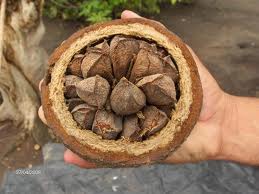 There are many problems eating for “nutrition” rather than just eating real food. One of them is caused by science itself. The brazil nut is a good example. Men who eat brazil nuts regularly have lower rates of prostate cancer, or perhaps more accurately, what prostate cancer they get they get at an older age than usual and it is less aggressive.
There are many problems eating for “nutrition” rather than just eating real food. One of them is caused by science itself. The brazil nut is a good example. Men who eat brazil nuts regularly have lower rates of prostate cancer, or perhaps more accurately, what prostate cancer they get they get at an older age than usual and it is less aggressive.
 The Brazil nut is too complex for science to say why it works as an anti-cancer food. There is also little money to be gained by advising men to eat more Brazil nuts. But, science can break down the Brazil nut, find out what chemicals are in it, and then speculate on that. And that is just what science did. The answer it came up with was selenium.
The Brazil nut is too complex for science to say why it works as an anti-cancer food. There is also little money to be gained by advising men to eat more Brazil nuts. But, science can break down the Brazil nut, find out what chemicals are in it, and then speculate on that. And that is just what science did. The answer it came up with was selenium.
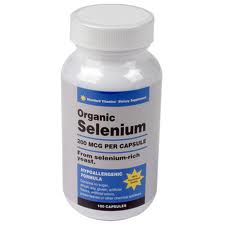 Selenium was a good candidate in the Brazil nut, a good “nutritional” candidate for the award of somehow preventing prostate issues. So while science could not champion the entire complicated Brazil nut it could champion selenium as a potential nutrient to ward off prostate problems. But then there was a problem: Men taking selenium supplements get cancer sooner and the aggressive kind. Ooops….
Selenium was a good candidate in the Brazil nut, a good “nutritional” candidate for the award of somehow preventing prostate issues. So while science could not champion the entire complicated Brazil nut it could champion selenium as a potential nutrient to ward off prostate problems. But then there was a problem: Men taking selenium supplements get cancer sooner and the aggressive kind. Ooops….
One cannot really blame science, but one does have to recognize its shortcoming. The selenium in the Brazil nut does not exist in isolation. It is with a multitude of other naturally-made chemicals in the nut and it could very well be their balance, their relationship or their mutual consumption that makes the entire nut good at preventing prostate cancer. Said another way, the prevention does not come from just the selenium. It does not flow from just the “nutriment.”
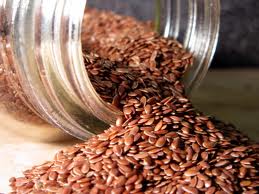 A similar issue exists with flax seed. It is touted as a non-meat source of Omega 3 fatty acids, and that is true. So flax seed oil is often recommended for vegetarians to get Omega 3 fatty acids. The problem is the oil by itself has been linked to prostate cancer whereas the entire seed itself has not. Again, science — researchers — reduced the food to its parts then recommended a part only to find the part in isolation was not so healthy. (As an aside I have a suspicion that things which bother the prostate also bother the breast, and things that bother the breast can also bother the prostate. Thus one should pay attention to research regarding which ever you don’t have.) A similar “Ooops” exists with vitamin A and lung cancer. Vitamin A in food is generally good. As a supplement it’s potentially dangerous. Said another way, it is the food not its nutrition that is probably good for you. Fish oil may indeed be good but fish is better (well, in theory before mercury pollution.) But the point is made: Eat food, not nutrition.
A similar issue exists with flax seed. It is touted as a non-meat source of Omega 3 fatty acids, and that is true. So flax seed oil is often recommended for vegetarians to get Omega 3 fatty acids. The problem is the oil by itself has been linked to prostate cancer whereas the entire seed itself has not. Again, science — researchers — reduced the food to its parts then recommended a part only to find the part in isolation was not so healthy. (As an aside I have a suspicion that things which bother the prostate also bother the breast, and things that bother the breast can also bother the prostate. Thus one should pay attention to research regarding which ever you don’t have.) A similar “Ooops” exists with vitamin A and lung cancer. Vitamin A in food is generally good. As a supplement it’s potentially dangerous. Said another way, it is the food not its nutrition that is probably good for you. Fish oil may indeed be good but fish is better (well, in theory before mercury pollution.) But the point is made: Eat food, not nutrition.
 One would think eating food not for nutrition would be a focal point of health-conscious people but apparently not. When I go to a “health food store” usually more than half of its space is given to individual nutrients, vitamin A to zinc et cetera. That means even these patrons who think they are eating better than most are caught in the same mindset: Eating nutrients, not food. Eating for “nutrition” ignores that chemical’s place in the food, that food in the larger diet, that diet in lifestyle, and all of that in the environment. It’s like not breathing clean air but rather bottled gasses, seeking out this or that mixture or additive. It’s assuming man-mixed gasses are better than clean air. It’s consuming parts not the whole.
One would think eating food not for nutrition would be a focal point of health-conscious people but apparently not. When I go to a “health food store” usually more than half of its space is given to individual nutrients, vitamin A to zinc et cetera. That means even these patrons who think they are eating better than most are caught in the same mindset: Eating nutrients, not food. Eating for “nutrition” ignores that chemical’s place in the food, that food in the larger diet, that diet in lifestyle, and all of that in the environment. It’s like not breathing clean air but rather bottled gasses, seeking out this or that mixture or additive. It’s assuming man-mixed gasses are better than clean air. It’s consuming parts not the whole.
 So, do I know the nutritional profile of say a Bidens alba? Yes, it’s has about twice of everything that spinach has except the oxalates. But is that how we should think of it, as a collection of nutrition? Couldn’t an alternative view be that a variety of food is like the variety of chemicals in the Brazil nut, that it’s the greatest variety of food that produces the best health, and that eating one food over another is like taking too much selenium? Or nitrogen?
So, do I know the nutritional profile of say a Bidens alba? Yes, it’s has about twice of everything that spinach has except the oxalates. But is that how we should think of it, as a collection of nutrition? Couldn’t an alternative view be that a variety of food is like the variety of chemicals in the Brazil nut, that it’s the greatest variety of food that produces the best health, and that eating one food over another is like taking too much selenium? Or nitrogen?
“Nutritionism” hasn’t worked well, or shall we say that since its invention it has a short and poor track record. The chemist in the kitchen creating technofood has done more harm than good whereas the way our ancestors ate proved it worked by our very existence. Our great grandparents did not eat for nutrition nor did they shun certain foods. They also ate a wide variety of food simply not eaten today. Isn’t it time for diet diversity again? Isn’t it time to Eat The Weeds?


Good Article. It’s been my personal belief that a variety of food is best for optimal health. Thank you.
Thank you for this. I agree wholeheartedly.
You write so darn well. Love this and everything else you write as well.
I promote your work to all my interested students.
Go Green Dean!
Blessings
Holly Drake
Great to read & learn from
(Though I’m diverse eater {only} within plant and plant-like foods). Is strange history of government official / experts / lobbyists that likely started with mass animal-husbandry and taxation/stealing of “peasant” food & food knowledge that was wise yet not so dissecting into isolated often high proce$$ed “nutritional components.”
Great article. I agree with you. I was raised eating a wide variety of food, which does not deplete the environment because it does not support monoculture. Wasting food is unthinkable. So we eat almost all parts of the once living things that is on the table, & the rest goes to the chicken, pigs, dogs, the compost pit or replanted (sweet potato slips, moringa branches). But in this time & place, I am considered barbaric, destitute, an embarrassment, cruel to animals just because I grow food along with my roses in the front yard, I miss eating snails with fern cooked in coconut milk, I don’t fillet my fish, my soup has bones, and I bring home banana peels, etc to feed my red wrigglers.